DieselHouse
Innovation is the legacy woven into every bolt and gear at the museum. With illustration and animation as my tools, I aim to bring this legacy to life, illustrating the evolution of engine technology over the years. From the pioneering designs of Rudolf Diesel to the cutting-edge innovations of today, each tells a story of relentless progress and boundless possibility.

With a deliberate choice to emphasize the engines as protagonists, I've created a visual language that speaks directly to the hearts of enthusiasts. By rendering the surroundings with subtlety, I allow the engines to take center stage, their intricate details and dynamic mechanisms commanding attention and admiration.
Through handdrawn lines and textures, each illustration celebrates the ingenuity and innovation, through out the ages, that define DieselHouse's engine collection.
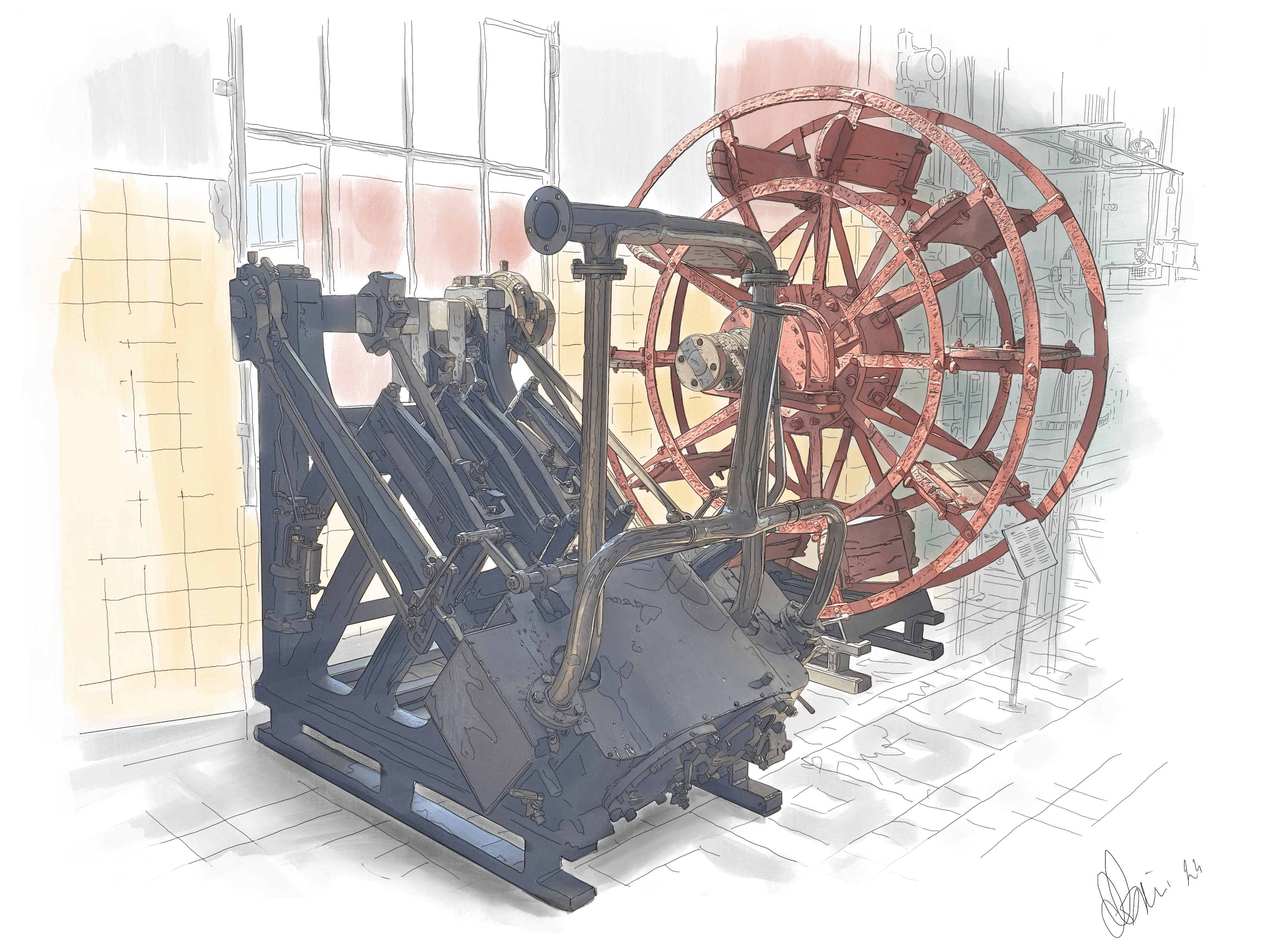
Fritz Juel steam ferry engine, from 1873

Fritz Juel steam ferry engine, from 1873
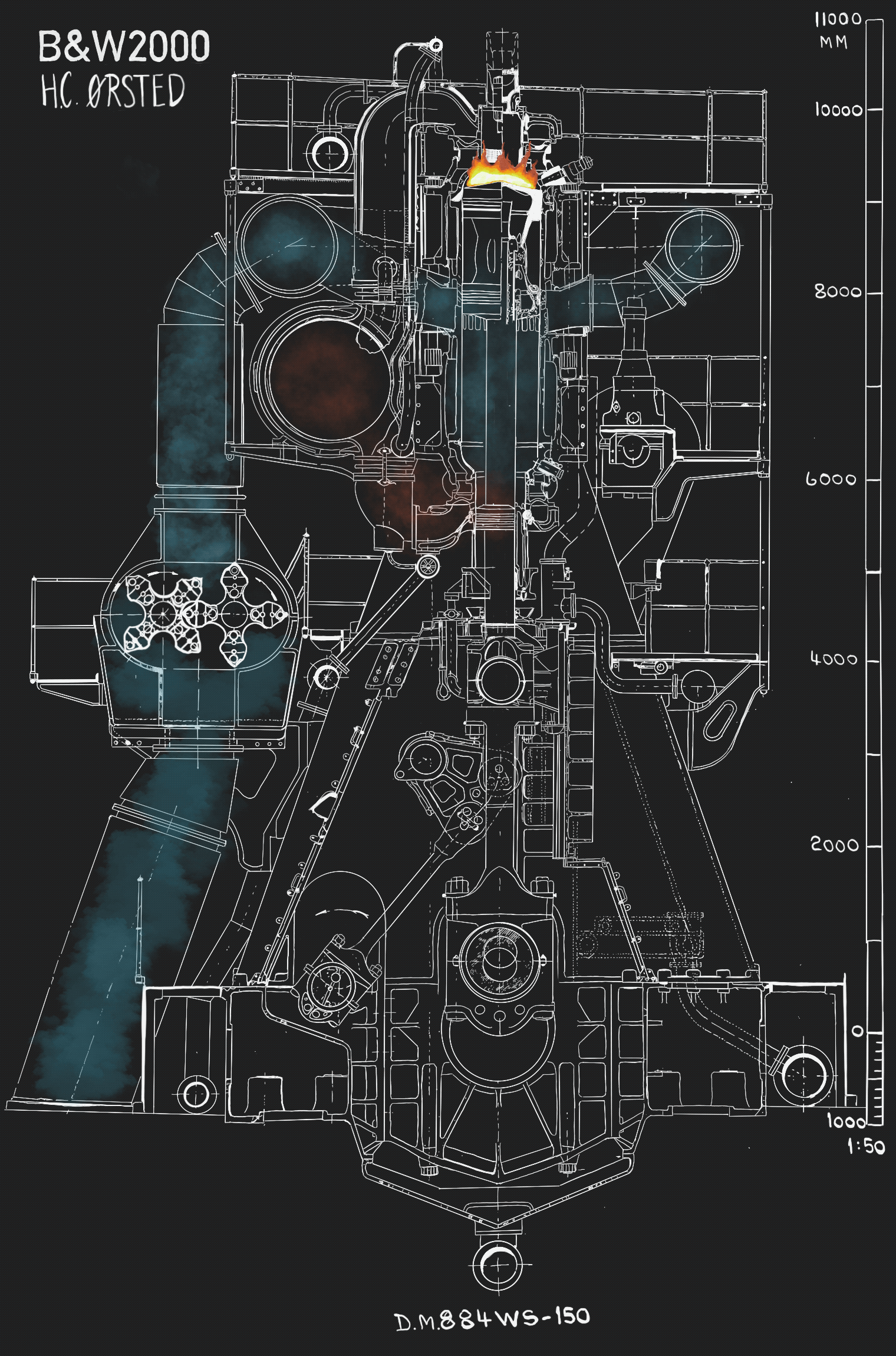
By visually dissecting the intricacies of combustion, compression, and torque, I empower young enthusiasts to not only understand how engines work but to speak their language with confidence.
How can you tell that this is a two-stroke engine? (I'll put the right answer at the bottom of this page ;))
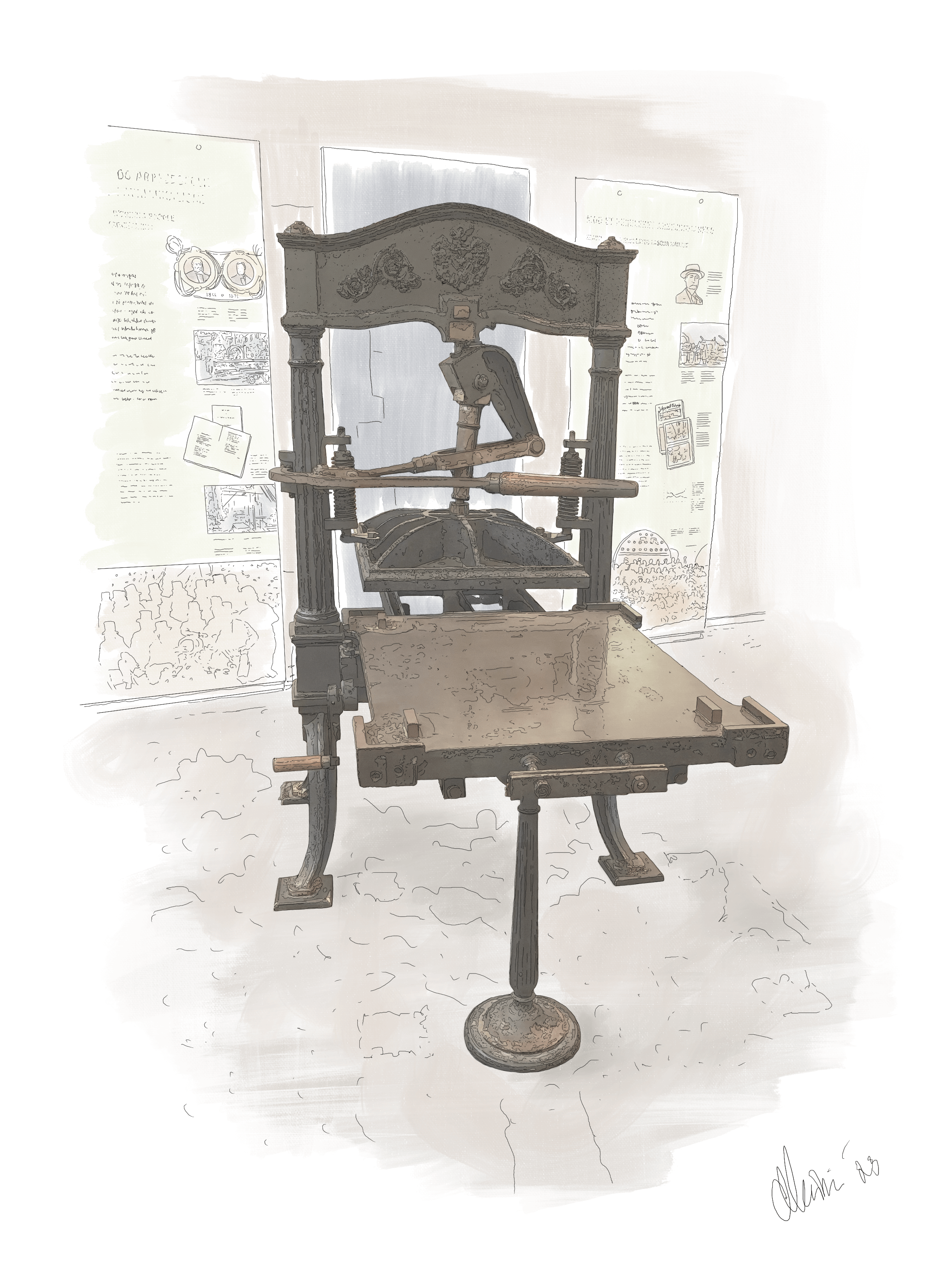
Printing press no. 15, 1847
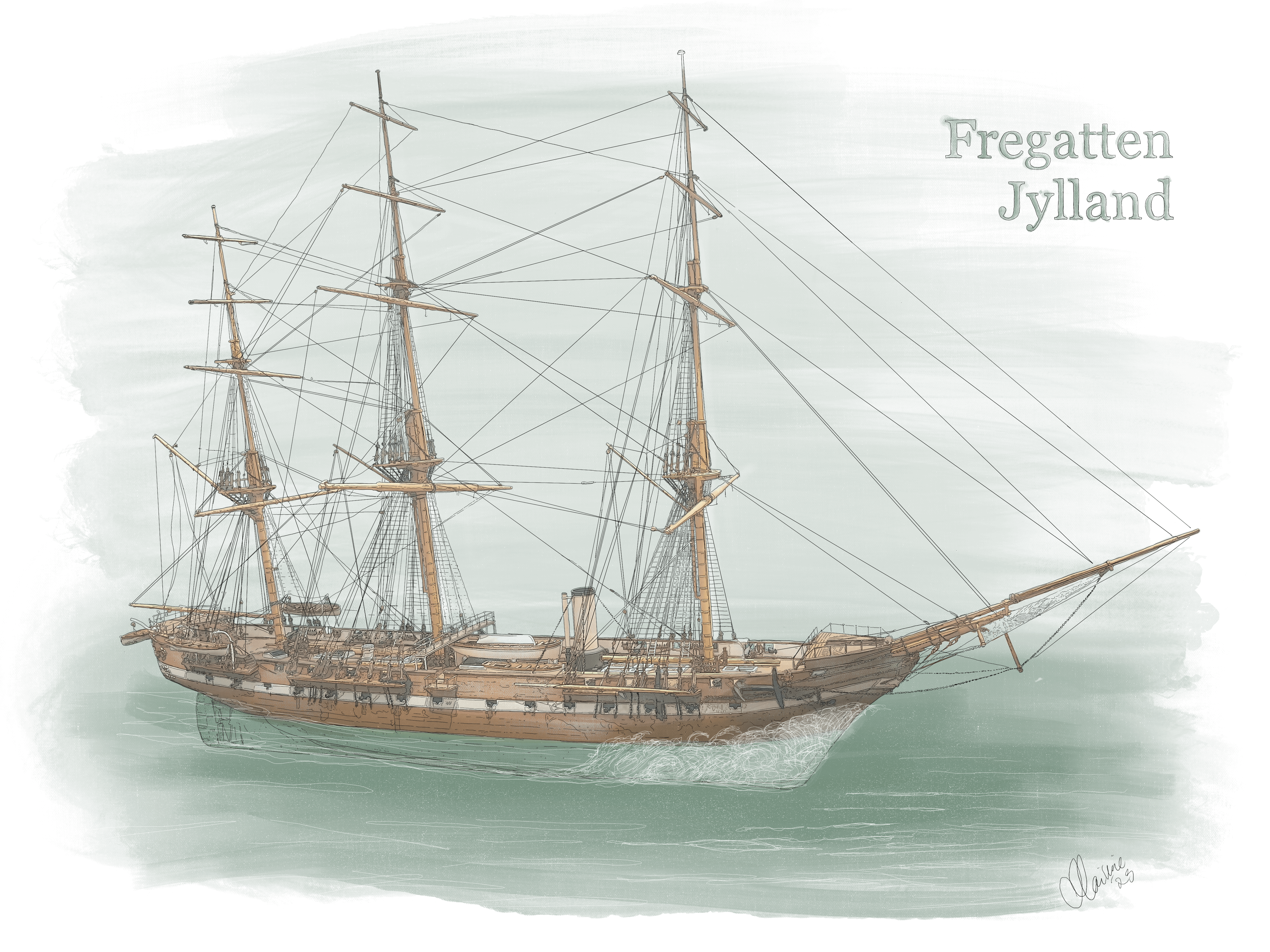
Fregatten Jylland, Build: 1857-1862
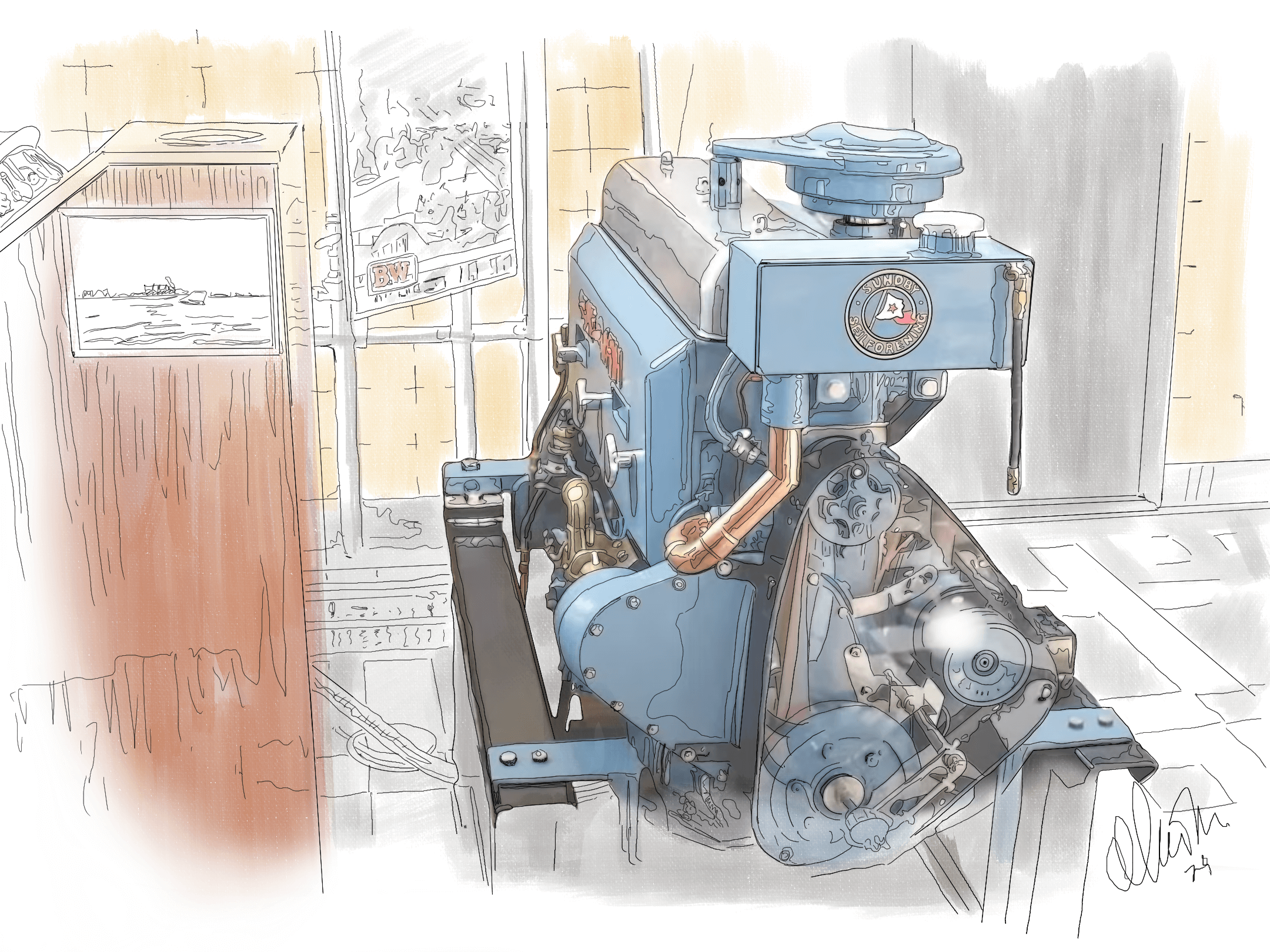
Bur-Wain, 1945
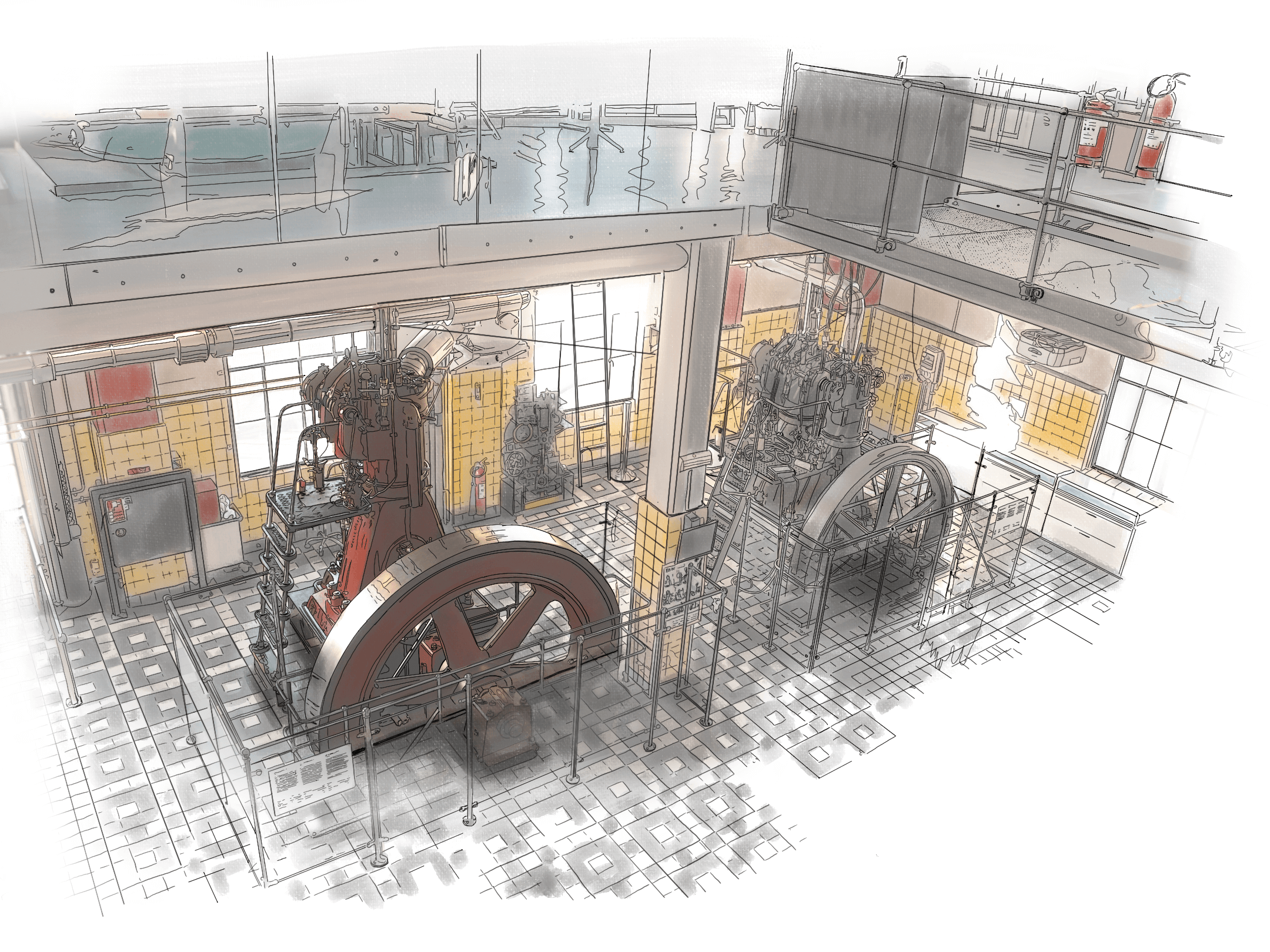
B&W no 1., 1904

Milk centrifuge, 1882

The Kings Ship - Dannebro, 1931
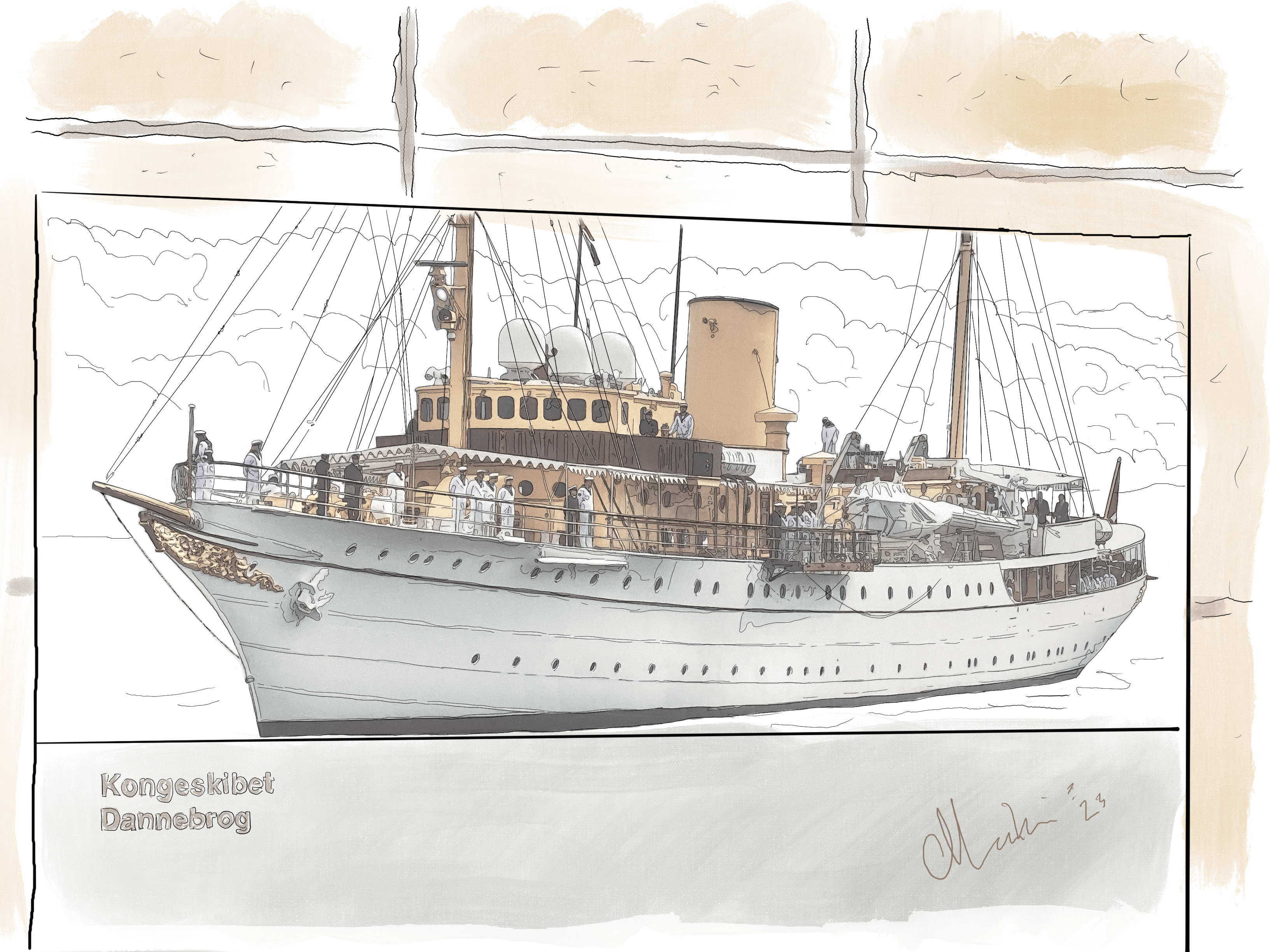
The Kings Ship - Dannebro, 1931
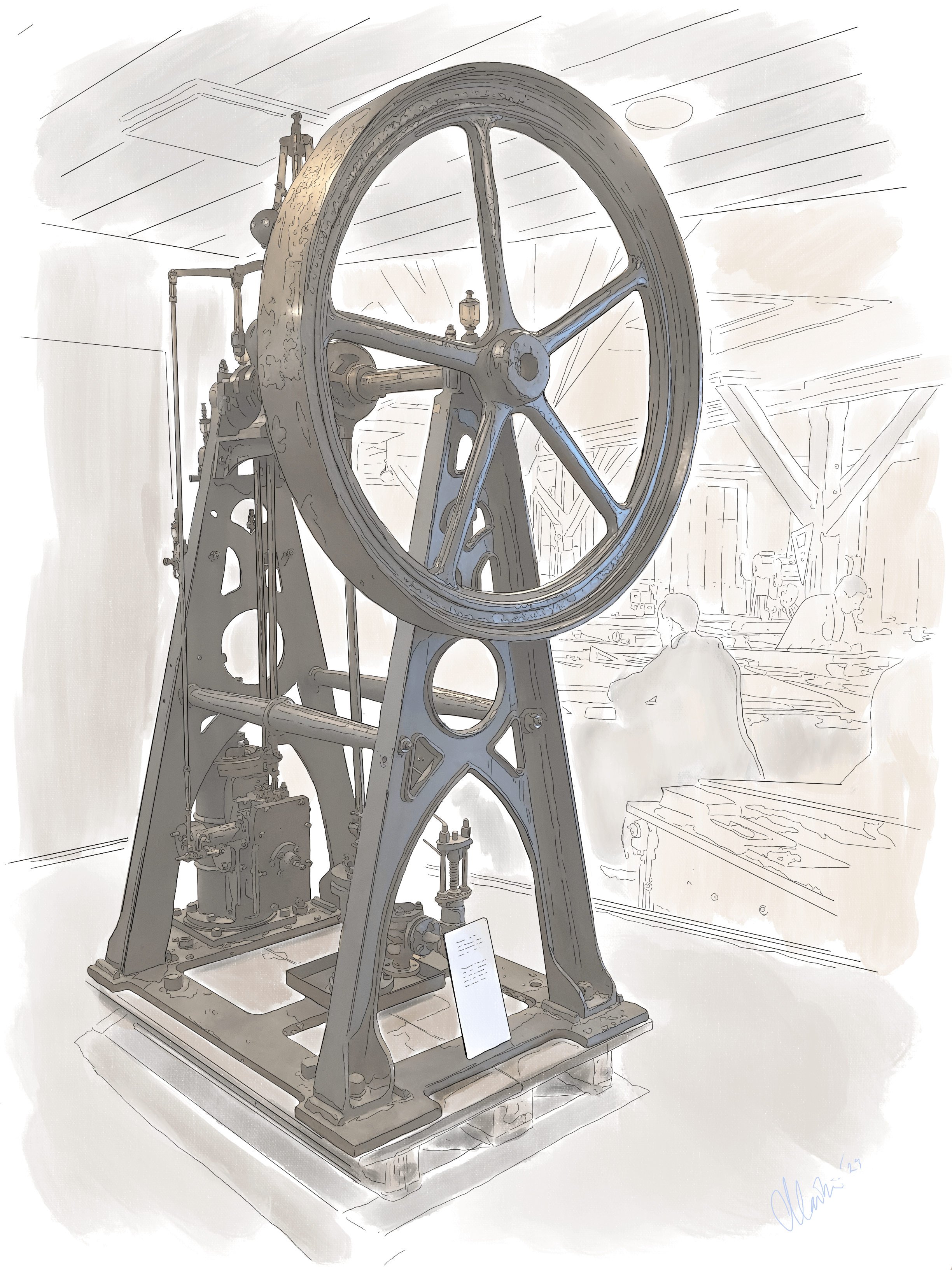
Steam Engine no. 162, 1859
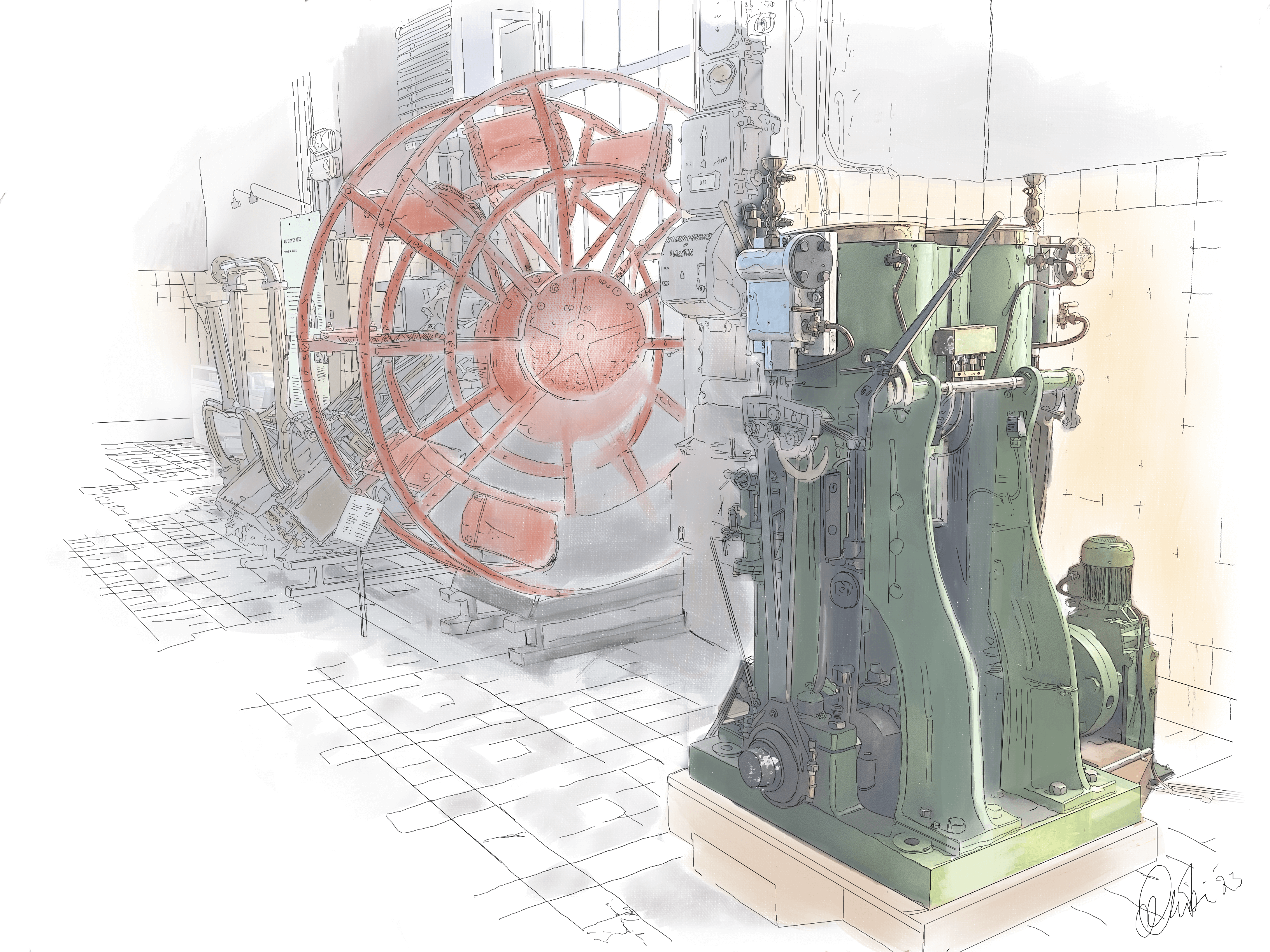
Steam Engine no. 356, 1872
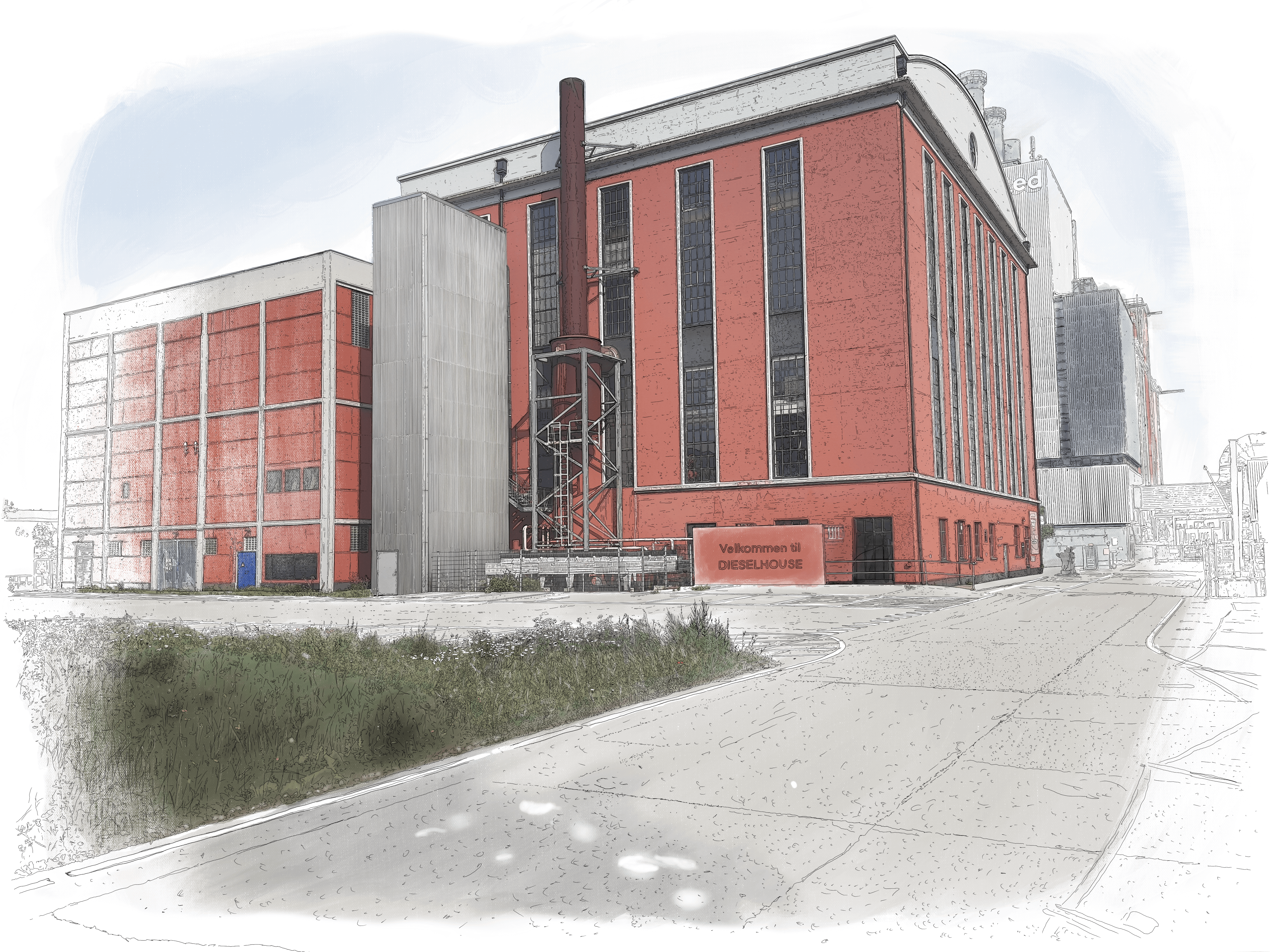
DieselHouse, H.C. Ørstedsværket, 1920
As a student designer at DieselHouse, responsible for everything design, I see firsthand the importance of inspiring the next generation of engine engineers.
Through my work, I hope to spark a passion for innovation and exploration in young minds, guiding them on a journey of discovery that extends far beyond the walls of the museum.
* Well done you for wanting to know!
Right answer: You can tell that this is a two-stroke enigine because it ignites both at the top and at the bottom.
This was an amazing innovation! Because it is, almost, twice as effective as a four-stroke engine, that only burns at the up-stroke.
(Oh the subjects you end up deep-diving into as a designer, I love it!)